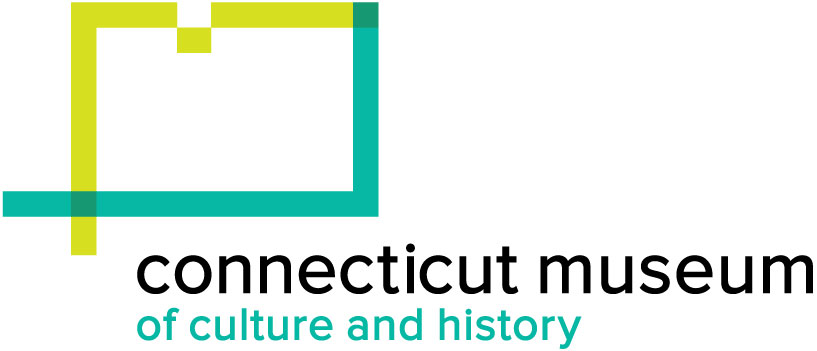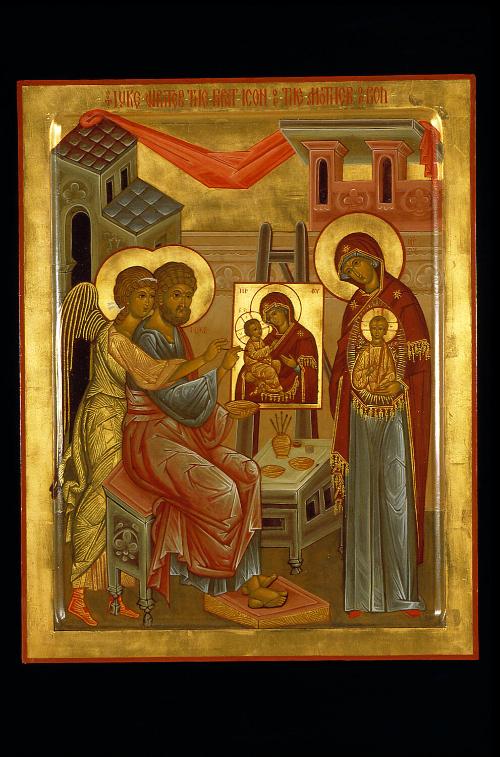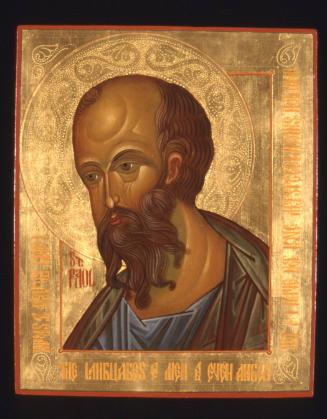SNEAP Years 3-4: Iconography by Marek Czarnecki
Subject
Marek Czarnecki
(Polish-American)
PhotographerPhotographed by
Phillip Fortune
Date2000-2002
MediumBorn Digital Photography
ClassificationsGraphics
Credit LineConnecticut Cultural Heritage Arts Program collections
CopyrightIn Copyright
Object number2015.196.1102.1
DescriptionBorn digital photograph of the icon "St. Luke writes the first icon." Marek Czarnecki produced this during his Byzantine iconography apprenticeship with Ksenia Pokrovsky, under the Southern New England Traditional Arts Apprenticeship Program, Years 3 and 4, 2000-2002. He learned how to write icons with several figures included. Photograph by Phillip Fortune.
NotesSubject Note: The Southern New England Traditional Arts Apprenticeship Program (SNEAP) is a CCHAP initiative since 1997 that fosters the sharing of community-based traditional (folk) artistic skills through the apprenticeship learning model of regular, intensive, one-on-one teaching by a skilled mentor artist to a student/apprentice. The program pairs master artists from Rhode Island, Massachusetts, or Connecticut with apprentices from one of the other states, as a way to knit together members of the same community or group across state lines. Teaching and learning traditional arts help to sustain cultural expressions that are central to a community, while also strengthening festivals, arts activities and events when master/apprentice artists perform or demonstrate results of their cooperative learning to public audiences. The Connecticut Cultural Heritage Arts Program at the Connecticut Historical Society manages the program in collaboration with the Folk Arts Program at the Massachusetts Cultural Council and independent folklorist Winifred Lambrecht who has a deep knowledge of the folk arts landscape of Rhode Island. Primary funding for the program comes from the National Endowment for the Arts, with support also from the Connecticut Commission on the Arts, the Institute for Community Research, and the Connecticut Historical Society.Subject Note: SNEAP Years 3 and 4 (2000-2002) - Byzantine iconographer Ksenia Pokrovsky studied with two of the foremost masters, Marina Sokolova and Anatoli Volgin, in Russia at a time when religious expression was punished. Her experience with a community of iconographers there, as well as the presence of prototype icons, gave her an invaluable grounding as a teacher. In Year 3 of the Southern New England Traditional Arts Apprenticeship Program, her work with Marek Czarnecki, who although skilled had few original prototypes as references at the time, concentrated on full figures and multi-figure compositions. He also learned to use complementary colors in garments, ways to paint architectural settings, and the technique of assiste, a way of drawing fine lines in gold using boiled beer as an adhesive. Mentor and student both had icons displayed in the "Poetics of Portraiture" exhibition at the Benton Museum at the University of Connecticut, and Marek won second prize in the recent Urban Artists Initiative exhibition “Fresh Perspectives” at the Hygienic Galleries in New London. In Year 4 they made a group of icons that Marek can use for instruction or exhibition: the Holy Face, an icon of the Virgin, and some festival scenes. They also composed an icon of a new Lebanese saint, working from traditional prototypes while incorporating contemporary descriptions from people who knew her.
Biographical Note: Marek Czarnecki began writing icons in 1990 for his home parish of St. Stanislaus Kostka in Bristol, CT, in his first studio there. It was appropriate for this first generation Polish-American that his first icon would be of Our Lady of Czestochowa, the Black Madonna of Poland. Iconography is a fundamental liturgical art form that provides authentic, meaningful and dignified images which exemplify the larger consciousness of the Christian Church. Icons carry a patrimony of both theology and art, conveying essential dogmatic and biographical information and embodying the presence of the holy ones depicted. After studying with several iconography teachers, Marek began a life-long apprenticeship with master iconographer Ksenia Pokrovskaya in 1999 until her passing in 2013. He has translated her teachings into an English language technical manual for iconographers, and taught workshops with her at several national sites, including St. Tikhon's Seminary in South Canaan, PA. Following established tradition, Marek’s icons are made with natural materials; the foundation is linen glued to a wood panel and primed with a marble-based gesso. Painted with egg tempera mixed with natural earth and mineral pigments, the halos and backgrounds are gilded with 22 karat gold. The icon is then varnished with copal resin.
Marek’s icons can be found in in the homes and chapels of individuals, as well as churches across the country, including the Catholic Cathedral of the Immaculate Conception in Springfield, IL, the Franciscan University of Steubenville, St. Thomas More Chapel at Yale University, and Sean Cardinal O'Malley. His icon of "Christ the Eternal High Priest", originally written for a seminary chapel, gained him international attention when it was chosen by the United States Council of Catholic Bishops as the image to represent "The Year of the Priest". This icon was widely distributed; more than a million copies were printed, reproduced and used in dioceses as distant as London, Stockholm, Singapore, and Sydney. Marek is also a skilled restoration artist, working with statues from churches across the country, and he creates ornaments and installations to mark festivals and holy seasons in his parish church of St. Stanislaus in Bristol Connecticut.
Marek has helped edit the book, "Hidden and Triumphant: The Struggle to Save Russian Iconography in Twentieth Century Russia" (Paraclete Press, 2010). He continues to teach students and write icons out of his home studio in Meriden, CT. He has won a CT Commission on the Arts Painting Fellowship in 1996 and 2004, the 1998 American Council for Polish Culture Award, the 2006 Polish American Historical Association Outstanding Achievement Award, and a Southern New England Traditional Arts Apprenticeship Grant to teach an advanced student. Articles on his work have appeared in the Hartford Courant, St. Anthony Messenger, Catholic Digest, Our Sunday Visitor, and New York Times. His website is www.seraphicrestorations.com
Additional materials exist in the CCHAP archive for this artist.
Cataloging Note: This project was made possible in part by the Institute of Museum and Library Services MA-245929-OMS-20.
Status
Not on view












